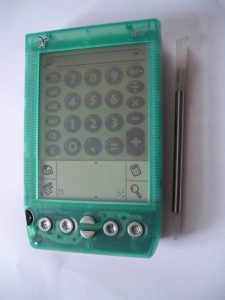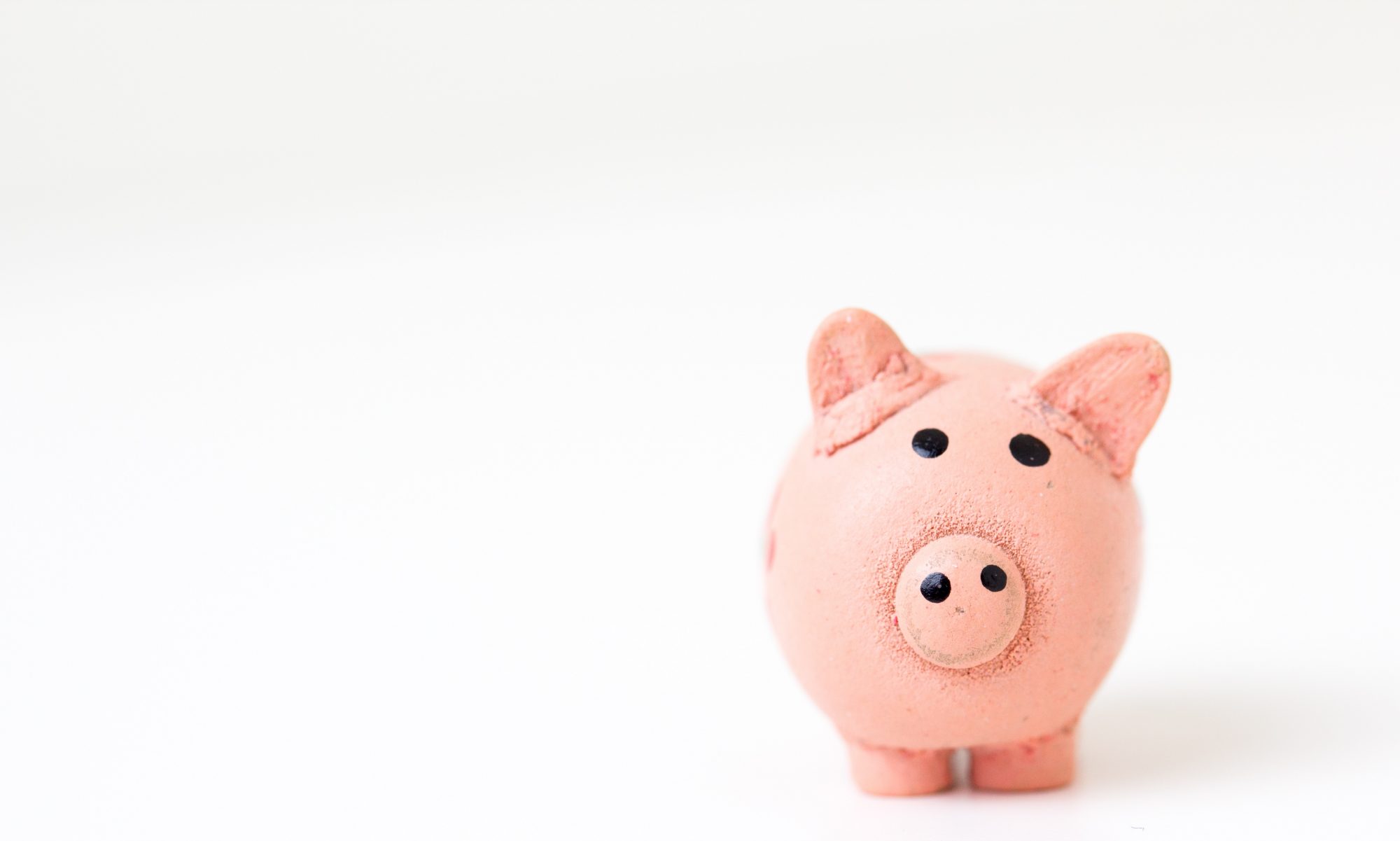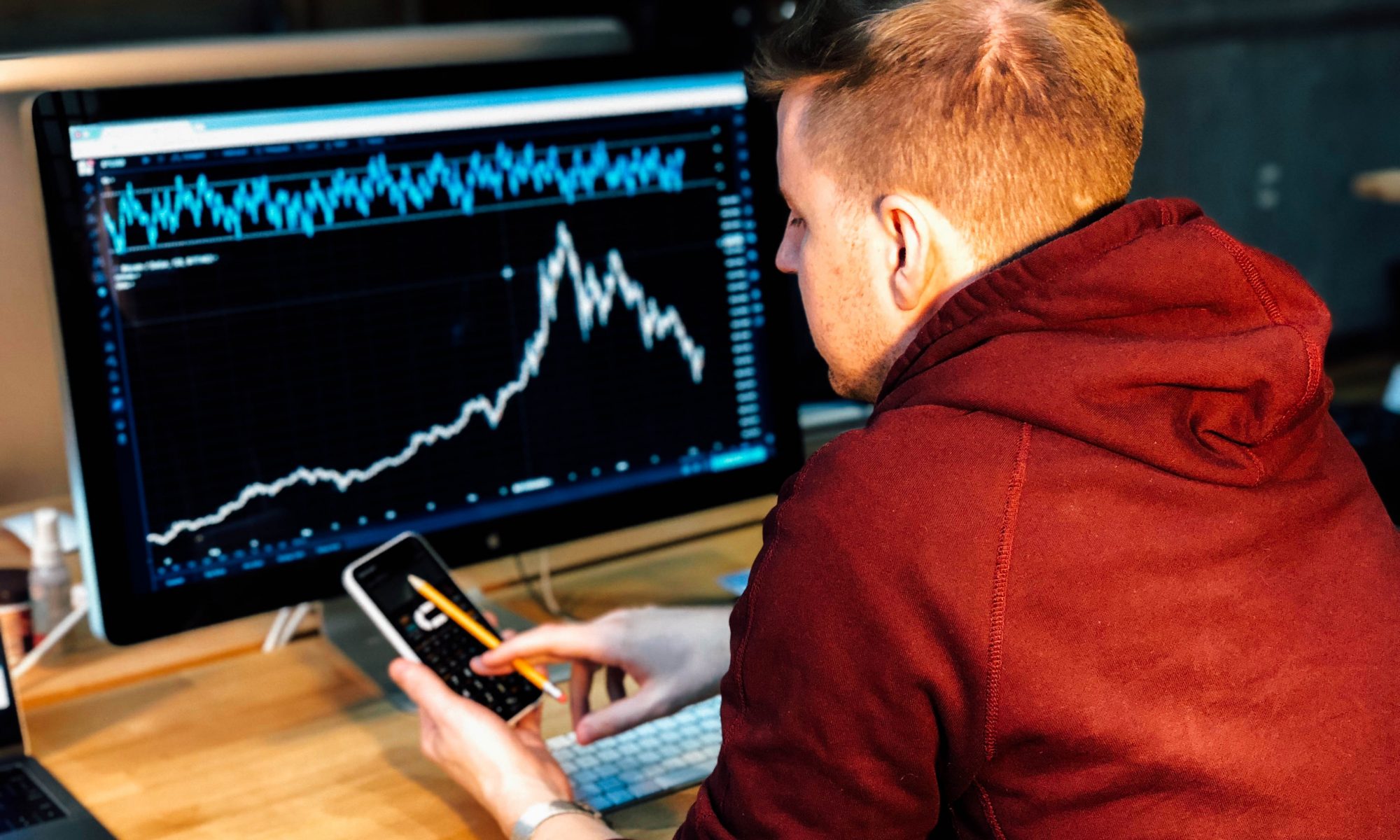I think it’s always fun to look back and think about our past–after all, the past is what got us to where we are today. I thought I’d share with you the very first investment I made: Handspring, Inc.
Now, you may not remember this little company, but they were a blip on the radar of the early oughts — in an era where the Palm Pilot ruled, they were a spin-off company. As a young teenager, I saw a blue Handspring Visor, their first product, and had to get one for my 14th birthday.
I loved their product and so I thought, I’m going to invest in this company: they’re going to be huge someday. And I so did. Unfortunately, they did not. But let’s back up a little further…
Sometime before this I remember being recommended a few books by my dad, who had got them referred to him by his friend, an airline pilot. I distinctly recall reading “Learn to Earn” by Peter Lynch and followed that by other financial books. My grandparents were also very “stock savvy” as they had a great deal of investments — primarily dividend paying stocks.
Nevertheless, I recall hearing the suggestion to invest in stocks of companies that you like. The logic being, hey, if you like Coca Cola, others probably do to! If you buy McDonald’s, others probably do too! My grandparents tended to use this strategy when it came to picking their stocks.
While that may have worked for my grandparents, you’re going to be shut-out of a lot of companies to invest in (by this logic you’d never invest in a pharmaceutical company unless you were on medication) and ultimately have a very undiversified portfolio, but I digress.
My Handspring Visor
Now back to my Handspring Visor. It was blue. It was beautiful. And I thought it was the cat’s pajamas (whatever that means).

At this same age, I thought it’d be good to do a bit of investing. Well, looking back, it was more speculation, but at the time I thought I was on to a company that was going to be a revolution to the personal device market.
So I opened a brokerage account! I was referred by my grandparents to some full-price broker (why I didn’t use E-Trade, I don’t know) and I think I paid a hefty fee to buy one share of Handspring: ticker symbol HAND.
I don’t know the exact price I paid, but I know it was around $100 or so, maybe $80. Looking at archived 10-K’s and other internet sources, Handspring IPO’d at $20 on June 21, 2000. It then soared to over $99 on Oct 19, 2000. I’m pretty sure I bought it somewhere in the summer of 2000.
Nevertheless, the dot-com bubble hadn’t fully burst at this moment, and I thought I had a winner.
And the price… drops
However, instead what happened was a tragedy. Handspring never made a profit, and so their share price dropped. And dropped. And dropped.
Finally, in 2003, their shares were trading between $1.00-$2.14 the first quarter and $0.60-$1.30 by the end of the year. They also announced that they were being acquired by Palm, Inc. — the same company that the founders of Handspring left.
For me, I still was holding the shares. Despite the not-so-great-idea of investing in a start-up, essentially, I still stuck to the idea of buy-and-hold. Ultimately, Palm gave Handspring shareholders 0.09 shares of Palm stock. I don’t recall specifics here, but I recall receiving Palm stock, so apparently my brokerage was able to handle the fractional shares.
I recall hearing the suggestion to invest in stocks of companies that you like
To continue the story, Palm was trading between $9.08-$12.07 in late 2003, around the time of the stock swap. But since I only owned 9% of a share, I only had around 81-108¢. All from a purchase price in the $80-100 range.
Nevertheless, I ended up calling the brokerage some time later and I think the broker took pity on me to sell this stock. At least I wouldn’t have to pay a $20 commission on a worthless piece of stock.
In the end, this was essentially a complete loss. My money evaporated like a puddle in Phoenix, AZ.
The rest of the story
So where is the moral in this? There are many take-aways!
- Start early.
I think this is a really important point. I, like many, learn through my actions and experiences. The earlier you are when you experience that failure or that lesson that teaches you, the better, I think. So when it comes to money, I would so much rather have blown through $100 as a 14 year old, than to blow through $1000 or $10,000 as an adult making the same mistake to learn the same lesson. - Diversify.
I had all of my eggs in one basket! I didn’t spread out my investing across many companies in different industries. This meant that my money was at the whim of a single, immature, company. When their stock started to tank (and tank it did) I was fully exposed to their mistakes or foibles. I’m not saying a company can’t release a dud here and there, the problem is when you personally are fully exposed to that dud. Diversification means to have your money invested in many different companies in many different industries. If you only invest in REIT’s, then when the housing market makes a correction, so does your entire portfolio. Instead, consider investing some in REIT’s and some in utilities, and some in consumer goods, and some in tech, etc. That way when one market or industry is suffering, your whole portfolio doesn’t take a hit. - Don’t [over]invest in businesses that don’t make money.
This is similar to the one before, but far more basic. Since I was investing in a single company, I had a reasonable opportunity to do some due diligence on them. I could have opened up their annual report and seen that they weren’t making any money! They were burning cash! Now, I understand that many start-ups do this in the beginning, until they develop market share, start selling the product they’ve been developing, or mature their business model. However, don’t overinvest in these types of companies. As I said before, diversify. Make sure you’re in at least some stable, well-performing, and frankly, profitable investments before you participate in speculation.
Overall, I hope you enjoyed hearing about one of my stories of woe. Fortunately for me, the damages were quite small, at least financially! (Damage to the ego? Much greater).
What financial mistakes have you made? Do you invest directly in individuals companies? Share with us in the comments!

